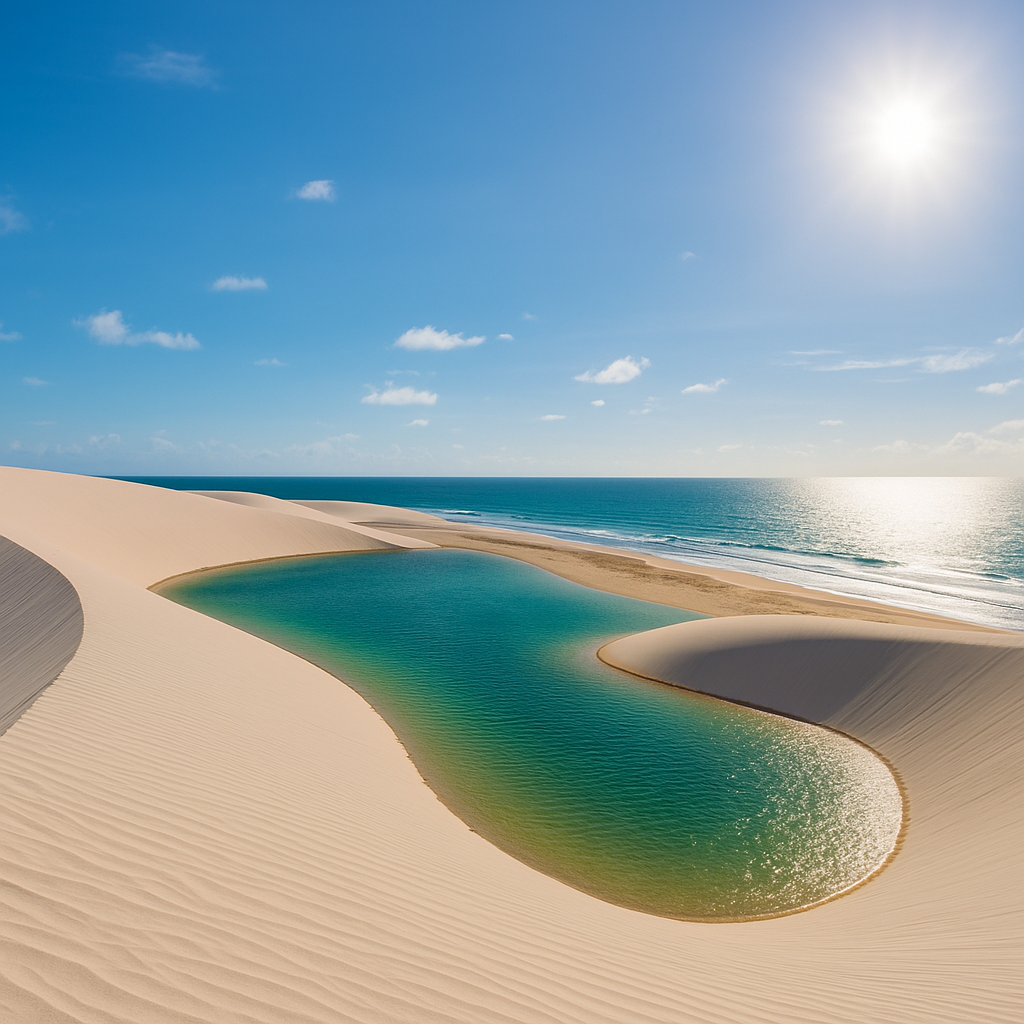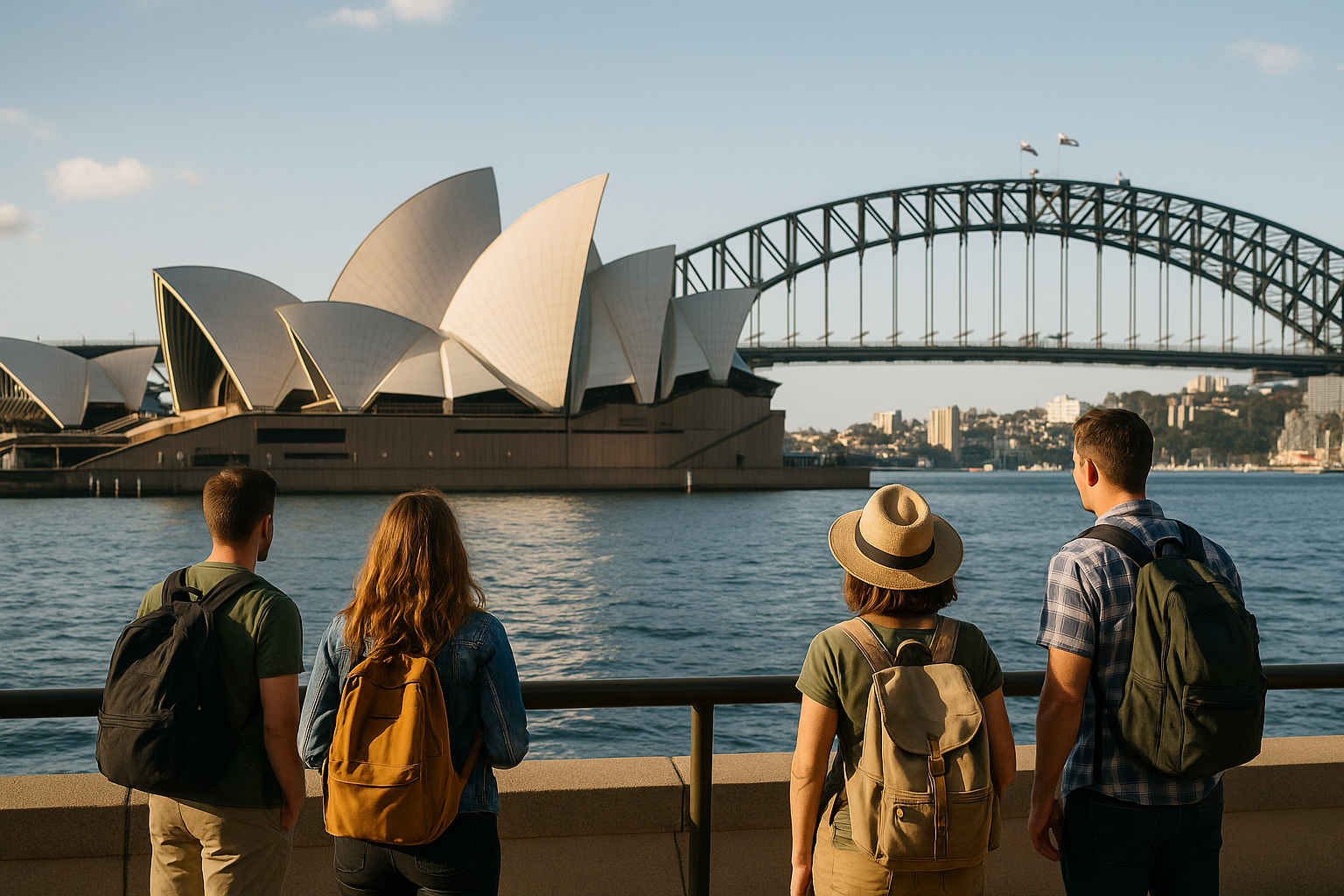Localizada em Jericoacoara, no estado do Ceará, a Pedra Furada é uma das formações rochosas mais icônicas do Brasil e um dos pontos turísticos mais visitados do Nordeste. Com sua aparência marcante e o buraco na rocha que permite a passagem da luz do sol, a Pedra Furada tornou-se um verdadeiro cartão-postal da região, atraindo visitantes de todo o mundo.
Neste artigo, vamos explorar a história, o significado e o charme dessa formação natural única, além de dar dicas sobre como visitar e o que esperar dessa experiência incrível.
O que é a Pedra Furada?
A Pedra Furada é uma formação rochosa de arenito situada a cerca de 2 km do centro de Jericoacoara, em uma área de fácil acesso para os visitantes. Sua principal característica é o buraco na rocha, esculpido pelo vento e pela água ao longo de milhares de anos, formando um arco natural considerado uma obra-prima da natureza.
Com mais de 30 metros de altura, a pedra foi moldada pela erosão, o que a torna ainda mais impressionante. O nome “Pedra Furada” vem justamente dessa particularidade: o buraco que atravessa a rocha de um lado ao outro, permitindo que o sol passe por ela, criando um efeito visual deslumbrante — especialmente durante o pôr do sol.
A História e Formação da Pedra Furada
A formação da Pedra Furada remonta a milhares de anos de processos geológicos. Ela é composta principalmente de arenito, uma rocha sedimentar formada pela compactação de partículas de areia ao longo do tempo. A erosão causada pelo vento e pela água foi essencial para moldar o buraco no centro da rocha, revelando toda a beleza natural do local.
Além da formação geológica impressionante, a Pedra Furada possui também forte simbolismo cultural. É considerada um local sagrado por povos indígenas da região e tem sido um marco importante no desenvolvimento turístico de Jericoacoara. A pedra também serve como ponto de referência para pescadores locais, que a utilizam como orientação para navegação.
Como Chegar à Pedra Furada?
Para chegar à Pedra Furada, os visitantes podem fazer uma agradável caminhada a partir do centro de Jericoacoara, que dura cerca de 40 minutos. A trilha é bem sinalizada e proporciona vistas incríveis do mar e das dunas ao longo do caminho. A caminhada em si é uma das experiências mais especiais para quem deseja se conectar mais profundamente com a natureza local.
Outra forma de chegar é por meio de um passeio de buggy, que pode ser contratado em Jericoacoara. Esses passeios são uma excelente maneira de explorar a região, pois passam por outros pontos turísticos e oferecem vistas panorâmicas das dunas e praias da região.
O Pôr do Sol na Pedra Furada: Um Espetáculo Natural
Uma das experiências mais procuradas por quem visita a Pedra Furada é assistir ao pôr do sol. O buraco na rocha foi moldado pela natureza de forma que, ao final da tarde, o sol se alinha perfeitamente com o arco de pedra, criando um espetáculo de luz e sombra.
Esse momento se tornou um dos mais aguardados em Jericoacoara, reunindo turistas e moradores ao redor da pedra para apreciar a vista e registrar a beleza do cenário. A experiência se torna ainda mais mágica quando o céu ganha tons alaranjados e rosados, refletindo no mar e nas dunas, criando uma atmosfera única de tranquilidade e encantamento.
Curiosidades Sobre a Pedra Furada
- Formação Geológica: A Pedra Furada é composta por arenito, e o buraco foi esculpido pela erosão do vento e da água ao longo de milênios.
- Alinhamento Solar: Durante o pôr do sol, o sol passa exatamente pelo buraco da pedra, criando um espetáculo visual de tirar o fôlego — uma das maiores atrações da região.
- Significado Cultural: Além de ser um ícone turístico, a Pedra Furada é um símbolo cultural importante para os moradores de Jericoacoara, sendo considerada sagrada por algumas comunidades tradicionais.
- Preservação Ambiental: A área ao redor da Pedra Furada é protegida e há normas rígidas para garantir que a formação natural não seja danificada pelo turismo excessivo.
Dicas para Visitar a Pedra Furada
- Use roupas e calçados confortáveis: A trilha até a Pedra Furada pode ser desafiadora em alguns trechos. Por isso, use calçados apropriados e roupas leves.
- Chegue cedo para o pôr do sol: Por ser uma atração muito procurada, é recomendável chegar com antecedência para garantir um bom lugar e aproveitar ao máximo o espetáculo.
- Leve água e protetor solar: Jericoacoara costuma ser muito quente, então leve uma garrafinha de água para se hidratar e não esqueça de aplicar protetor solar.
- Respeite a natureza: Por ser um local muito visitado, é fundamental seguir as orientações de preservação ambiental e evitar deixar lixo pelas trilhas ou praias.
Conclusão: Pedra Furada, um Tesouro Natural do Ceará
A Pedra Furada é, sem dúvida, um dos maiores tesouros naturais do Ceará e uma das atrações turísticas mais encantadoras de Jericoacoara. Com sua formação rochosa única, simbolismo cultural e o espetacular pôr do sol, ela representa toda a beleza e diversidade natural da região.
Visitar a Pedra Furada é uma experiência que vai além de observar uma formação geológica — é uma oportunidade de se conectar com a natureza, admirar uma das paisagens mais incríveis do Brasil e viver momentos de pura magia. Se você está planejando uma viagem a Jericoacoara, a Pedra Furada é uma atração que você não pode deixar de conhecer.







